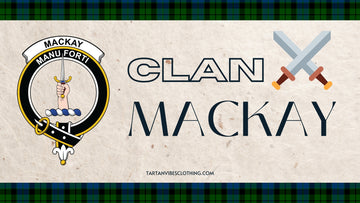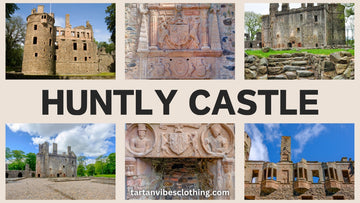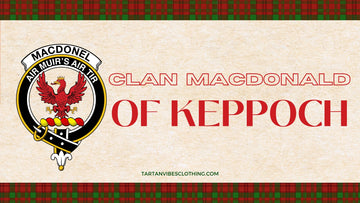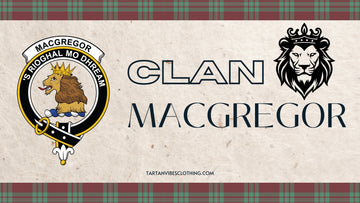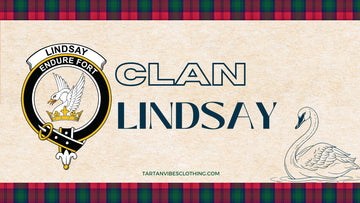Legends of Clan Mackay: Tales of Bravery and Resilience
by Teejay Smith on Apr 17, 2024
Table of Content
I. Introduction
Nestled in the majestic landscapes of the Northern Highlands, Clan Mackay is a venerable Highland clan with a heritage steeped in centuries of tradition and history. Its origins trace back to the rugged and remote areas of the Scottish Highlands, where it emerged as a formidable force embodying resilience, honor, and a deep connection to its ancestral lands.
This article serves as a gateway to delve into the captivating narrative of Clan Mackay Scotland, exploring their ancient roots, significant contributions to Scottish history, and enduring traditions that have shaped their identity and legacy. Through the annals of time, Clan Mackay has woven a tapestry of courage, loyalty, and cultural significance, leaving an indelible mark on Scotland's cultural tapestry and historical narrative.
A. A Brief Overview of Clan Mackay

Clan Mackay, a prominent Highland Scottish clan in Scottish history, traces its lineage to the ancient Celtic tribes of Scotland. The Mackays hailed from the far north of Scotland, primarily the region of Strathnaver in Sutherland, and played a significant role in the turbulent history of the Highlands.
Known for their fierce loyalty and martial prowess, the Mackays established themselves as formidable warriors and staunch defenders of their ancestral lands. They participated in numerous battles and conflicts throughout the centuries, shaping the course of Scottish history. With their distinctive tartans, symbols, and motto "Manu forti" (With a strong hand), Clan Mackay remains an enduring symbol of Highland resilience and honor.
B. The original of Clan Mackay

In his Book of Mackay (1906), historian Angus Mackay compares genealogies of Clan Mackay's early chiefs from two sources: Sir Robert Gordon, a 17th-century historian, and Alexander Mackay of Blackcastle, an 18th- to 19th-century historian. While both genealogies share similarities, they also present significant differences regarding the ancestry of the Mackay chiefs. Gordon's genealogy suggests a common ancestor shared with Clan Forbes and Clan Farquharson's chiefs, attributed to a strong alliance during the 16th century.
However, the Blackcastle Manuscript, according to Angus Mackay, provides a more accurate lineage. It claims that Iye Mackay, Clan Mackay's 1st chief, born around 1210, descended from Malcolm MacHeth, 1st Earl of Ross. Malcolm MacHeth's connection to early rulers or Mormaers of Moray is suggested, and the Mackays' arrival in Strathnaver is linked to conflicts with King Malcolm IV, leading to their settlement and alliances in the north. This narrative proposes that Kenneth MacHeth, killed in 1215, maybe the ancestor of the Stathnaver Mackays, with Iye Mackay succeeding him as chief and marrying the Bishop of Caithness's daughter in 1263.
II. Clan Mackay History

A. Wars of Scottish Independence
According to Major-General Stewart, Clan Mackay supported Robert the Bruce at the Battle of Bannockburn in 1314. However, in the late 14th century, chief Iye Mackay, 4th of Strathnaver, and his son faced tragedy when they were murdered at Dingwall Castle by Nicholas Sutherland, 1st of Duffus, a leader from one of Clan Sutherland's junior branches.

This event led to significant violence, including a retaliatory raid on Dornoch in 1372, resulting in the burning of the cathedral and the hanging of many Sutherland men in the town square. Eventually, the feud subsided as both sides were called to confront a common enemy, the English.
B. In the 15th century
In 1403, Clan Mackay clashed with Clan MacLeod of Lewis at the Battle of Tuiteam Tarbhach because MacLeod discovered that his sister had been mistreated and opted to raid Strathnaver and Brae-Chat in Sutherland. However, during the ensuing battle, MacLeod met his demise. In 1411, Chief Angus Du Mackay, 7th of Strathnaver, sided with the Stewart Confederacy during Donald of Islay's challenge for the Earldom of Ross.
After defeat and imprisonment at the Battle of Dingwall, Donald reconciled with Angus by marrying his sister Elizabeth, highlighting Mackay's rising prominence. The subsequent Battle of Harpsdale in 1426 saw Angus Du Mackay and his son Neil clash with Caithness, resulting in Neil's captivity under King James I.

Between 1429 and 1433, Angus Du Mackay, 7th of Strathnaver, led Clan Mackay to victory against Clan Sutherland in the Battle of Drumnacoub, a conflict recorded by historians such as George Buchanan and John Pinkerton. In 1464, Clan Mackay, led by Angus Roy Mackay, 9th of Strathnaver, joined forces with Clan Keith to defeat Clan Gunn of Caithness in the Battle of Tannach. The late 15th century saw ongoing strife between Clan Mackay and Clan Ross, leading to battles like the Battle of Tarbat in 1486, where the Mackays initially suffered defeat. However, they retaliated in the Battle of Aldy Charrish, claiming victory over the Rosses.
C. In the 16th century
In the late 15th and early 16th centuries, Chief Iye Roy Mackay, 10th of Strathnaver, supported the Scottish Crown against Donald Dubh's rebellion. Clan Cameron tradition mentions a victory in 1505 over a combined force of Clan Mackay and Munros at the Battle of Achnashellach. In 1513, Chief Iye Roy Mackay, alongside his brother John Riavach Mackay, led the Clan Mackay at Flodden, resulting in significant casualties. In 1544, Clan Mackay participated in the Battle of Glasgow alongside the Earl of Arran, and in 1548, he joined the Siege of Haddington.

In 1555, during the Siege of Borve Castle, Chief Iye Du Mackay was captured by the Sutherlands, taken to Dumbarton Castle, and later transferred to Edinburgh Castle. In 1562, Clan Mackay participated in the Battle of Corrichie, siding with Mary, Queen of Scots, in opposition to George Gordon, the 4th Earl of Huntly.

In 1586, William Mackay, 1st of Bighouse, aided the Clan Gunn in defeating the Clan Sinclair at the Battle of Allt Camhna. Soon after, the Mackay of Aberach branch supported the Earl of Sutherland in defeating the Clan Gunn at the Battle of Leckmelm. Chief Huistean Du Mackay, 13th of Strathnaver, allied with the Earl of Sutherland in 1588 and married his daughter the following year.
D. In the 17th century
Thirty Years' War
In April 1616, Chief Donald Mackay was knighted by the king during his trip to London with his uncle, Sir Robert Gordon. In 1626, Sir Donald Mackay joined the Thirty Years' War in Denmark's service with 3000 men under Count Mansfeld and Colonel Robert Monro. He was later honored as a Baronet of Nova Scotia in March 1627 and elevated to Lord Reay in 1628. During his military engagements in Germany in 1630, he participated in the capture of Stettin and Colberg.
In 1631, Lord Reay was authorized by Charles I of England to raise troops for Gustavus Adolphus of Sweden. Still, he faced challenges such as duel-related imprisonment at the Tower of London with David Ramsay. The death of Gustavus Adolphus in 1632 led to complications in Lord Reay's financial reimbursements from the king.
Civil War
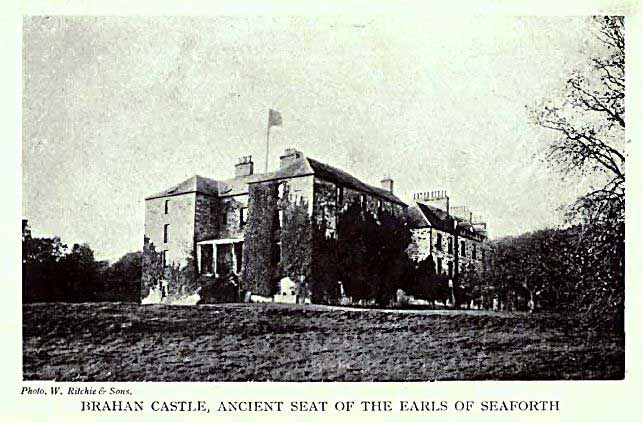
In 1638, Donald Mackay reluctantly signed the Covenant with his son due to his allegiance to Charles I. However, Charles I's execution in 1649 led to plans for Mackay's elevation to Earl of Strathnaver being halted. He later died in exile in Denmark in February 1649. In 1651, Clan Mackay fighters participated in the Battle of Worcester under the Duke of Hamilton, supporting Charles II.
In 1680, George Mackay became the 3rd Lord Reay under his grandfather's guardianship, Sir George Munro. In 1689, General Hugh Mackay stationed 100 Mackays in Brahan Castle to monitor the Mackenzies for William, Prince of Orange. Sadly, General Mackay ended at the Battle of Steinkirk in 1692.
E. In the 18th century
Jacobite rising of 1715

During the Jacobite rising of 1715, the Clan Mackay sided with George I of Great Britain against the Jacobites. They defended Inverness Castle and participated in the Skirmish of Alness in 1715 against Mackenzie, Earl of Seaforth. Additionally, in 1719, 80 Clan Mackay soldiers fought in the Battle of Glen Shiel, emerging victorious against the Jacobites.
Jacobite rising of 1745

During the Jacobite rising of 1745, Clan Mackay once again sided with the British Government. The Clan Mackay Independent Highland Companies, supported by men from Loudon's Highlanders regiment, intercepted and seized gold meant for the Jacobite leader Charles Edward Stuart in what became known as the Skirmish of Tongue. Ensign John Mackay led the Independent Highland Companies of Clan Mackay to fight at the Battle of Littleferry in 1746, defeating the Jacobites and capturing George Mackenzie, 3rd Earl of Cromartie, at Dunrobin Castle.
III. Clan Mackay Crest and Coat of Arms
A. Clan Mackay Crest
The combination of these symbols in the Mackay Clan Crest not only honors the clan's historical roots but also conveys enduring values such as readiness, resilience, and a connection to the fertile landscapes of their ancestral lands. The crest is a proud emblem, representing the identity and spirit of Clan Mackay's history across generations.
Gaelic Name: Mac-an-t-Saoir
Crest: A dexter hand holding a dagger in pale, Proper
Motto: Per Ardua (Through difficulties)
Origin of Name: Gaelic, 'Son of the carpenter'
Badge: White heather
Lands: Kintyre, Degnish, Glen Noe, and Badenoch
Clan Chief: Donald Russell MacIntyre of Glenoe

The Clan Mackay crest features an arm extending upward, grasping a dagger firmly in hand, symbolizing strength and readiness for battle. This imagery embodies the resilience and determination historically associated with the Mackay Clan. Their motto, "Manu Forti," meaning "With a strong hand," further reinforces their ethos of courage, steadfastness, and the readiness to defend their honor and territory with unwavering strength. These symbols serve as powerful reminders of the Clan Mackay's valorous heritage and their commitment to protecting their kin and land with unwavering resolve.
B. Clan Mackay Coat of Arms

The Clan Mackay Coat of Arms carries deep symbolic significance that reflects the clan's values and history. The azure background represents loyalty and truth, virtues held in high regard by the Mackays. The chevron adorned with three bear heads, which are coupled, symbolizes strength, courage, and fierce protection, qualities symbolic of the clan's warrior spirit. A roebuck's head sits atop the chevron, flanked by two hands holding daggers, signifying readiness and defense. This imagery embodies the Mackays' commitment to honor, resilience, and vigilance in safeguarding their people and lands.
Overall, the Mackay Clan Coat of Arms encapsulates the enduring legacy of the Mackay clan, depicting their proud heritage and unwavering dedication to their values and principles.
IV. Clan Mackay Tartan
Every clan has multiple variations of its tartan, which can be quite bewildering for those unfamiliar with the system.






The Clan Mackay tartan is a traditional Scottish tartan associated with the Clan Mackay. Similar to the Black Watch tartan, the Clan MacKay tartan predominantly features shades of blue, green, and black. While blue and green share equal space on the fabric, representing loyalty, truth, and the lush landscapes of their ancestral lands, black lines of varying thickness break up the chequered pattern, creating a distinct criss-cross effect that adds depth and contrast to the tartan, enhancing its visual appeal. It's primarily the pattern of these black lines that sets it apart from the Black Watch tartan.
Overall, the Mackay Clan Tartan is a vibrant and meaningful pattern that reflects the Mackay clan's pride, history, and identity.
Explore the timeless traditions of Clan Mackay through our collection of tartan products on our website. And bring a piece of the clan's history into your present.
V. Prominent Members of Clan Mackay
A. Aeneas Simon Mackay, 15th Lord Reay

Aeneas Simon Mackay, the 15th Lord Reay, is a British corporate financier holding the position of hereditary Clan Chief of Clan Mackay. He also holds the title of Lord of Ophemert and Zennewijnen in the Netherlands, where he oversees Castle Ophemert. Lord Reay gained entry into the House of Lords in January 2019 following success in a hereditary peers' by-election. As a Conservative member of the House, he actively participates in Lloyd's as well.
As a military leader, Lord Reay played a crucial role in defending Clan Mackay's interests and participating in significant battles of his time. His strategic acumen and leadership skills were evident in his engagements in Scotland and on the continent. Beyond his military and political endeavors, he also made lasting contributions to cultural and social aspects, leaving a legacy that continues to be honored within Clan Mackay and the broader Scottish community.
B. Hugh William Mackay, 14th Lord Reay
Hugh William Mackay, the 14th Lord Reay, held a significant political role as a Conservative member of the House of Lords. Notably, he became the lone male Lord of Parliament in the House of Lords after the automatic right of all British hereditary peers to sit there was abolished in 1999. He inherited his title following his father's passing in 1963 and initially sat in the House of Lords as a cross-bencher. Later, he aligned with the Liberal Party before ultimately joining the Conservative Party in 1972.
Lord Reay advocated for various causes throughout his political career, from abolishing capital punishment to imposing restrictions on onshore wind farms. He was actively involved in political and public affairs and contributed significantly to the governance and development of Scotland. His leadership and contributions impacted the political landscape and the welfare of the people he represented.
C. Donald James Mackay, 11th Lord Reay
Donald James Mackay, the 11th Lord Reay, was a British administrator and Liberal politician of Dutch origin. He succeeded his father in 1876 and gained British citizenship in 1877. In 1881, he was granted Baron Reay of Durness in the County of Sutherland in the Peerage of the United Kingdom. Upon his return to Britain, he held the position of Under-Secretary of State for India from 1894 to 1895 in Lord Rosebery's Liberal government. Additionally, Lord Reay represented Britain at the Second Peace Conference, which led to the signing of the Hague Convention in 1907.
Lord Reay's most notable political act occurred during the crisis surrounding the People's Budget of 1909–10, when the House of Lords, breaking a tradition spanning over two centuries, rejected the Budget. He vehemently opposed this action and famously warned, "Oligarchies are seldom destroyed and more frequently commit suicide."
📜 Please also see more clan chiefs at clanmackaysociety.co.uk
VI. Conclusion
In conclusion, Clan Mackay is a testament to the rich tapestry of Scottish history and heritage. From their origins in the rugged landscapes of the Highlands to their enduring contributions to politics, military endeavors, and cultural preservation, the Clan Mackay has left an indelible mark on Scotland's story. Through their steadfast loyalty, valor in battle, and resilience in the face of adversity, the Mackays have upheld their clan's proud traditions and values for generations.
Today, their legacy continues to inspire and unite descendants worldwide, reaffirming the enduring spirit and significance of Clan Mackay in the annals of Scottish history.
Frequently Asked Questions
What was the Mackay clan known for?
During the Jacobite rising of 1715, the Clan Mackay were anti-Jacobite, taking the side of George I of Great Britain and defending Inverness Castle against the Jacobites. The Mackays were also at the Skirmish of Alness in 1715 against Mackenzie, Earl of Seaforth.
What happened to the Mackay clan?
The Mackay clan was numerous and powerful, and it had a history of continual strife with its neighbors. After five centuries of dispute, it finally lost its lands to the Sutherlands in the nineteenth century.
How powerful was clan MacKay?
Historically, clan MacKay was one of the most powerful of the ancient Highland clans. They fought in many battles, both with their neighboring clans and against the rebelling Jacobite forces, and occupied a large amount of territory in the north of Scotland, in the area once known as Strathnaver.
Did the Mackay clan have a castle?
Castle Varrich in Tongue, Sutherland was Clan Mackay castle, the ancient seat of the chief of Clan Mackay, but the chief later moved to the House of Tongue, Sutherland (still in private ownership). Castle Varrich, also known as the Bishops of Caithness, originally held Caisteal Bharraich before being held by the Mackays.
What is the difference between McKay and MacKay?
The MacKay surname is of ancient Scottish origin. It is the English translation of the Scottish Gaelic name Mhic Aiodh or Mac Aiodh. McKay is a more modern variant spelling that appears to have begun various times during the early 1800s.

